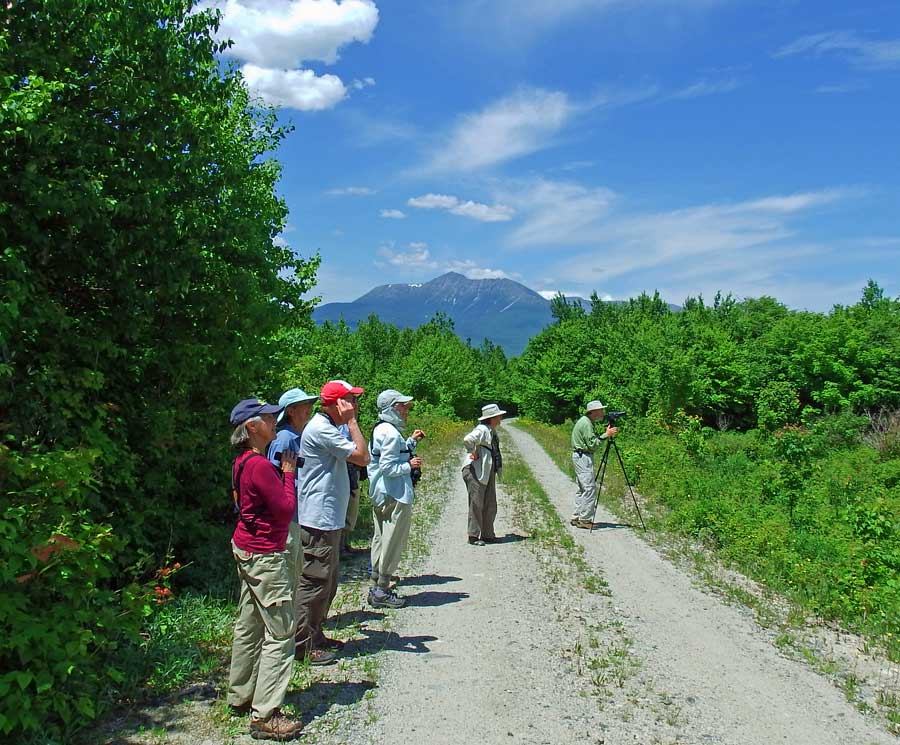
Katahdin Woods & Waters was proclaimed one of America's newest National Monuments in 2016. It encompasses a large tract of forest and the East Branch of the Penobscot River. The monument is so large (87,563 acres) and so new that local birders are still exploring it. Fortunately, most of the birding takes place along a lightly traveled gravel road that loops through one of the most scenic portions of the park. Even the access to this area - across private roads - is remote and beautiful, with good birding. However, these rough gravel roads are used by logging trucks. Yield to trucks in both directions, and never park in the road or around blind corners.
Begin the loop at Sandbank Stream Campsite, where a kiosk contains maps. There are several tent sites and a privy here. Check the wetlands next to the campsite, and then walk the first quarter mile of road to a marsh and sharp right turn. This is one of the strongest boreal stretches within the monument, where spruce grouse and black-backed woodpeckers have been encountered sporadically.
Drive the loop, stopping to bird as desired. Much of this forest was harvested over previous decades. The regenerating woodland is attractive to many sun-loving warbler species. Red-eyed vireos are abundant, blue-headed vireos are common, and Philadelphia vireos are uncommon. The understory is thick, favoring hermit and Swainson's thrushes, and veeries. In some spots, the openings in the forest provide splendid views of Katahdin in nearby Baxter State Park. Brambles growing up in these spots are good for alder and least flycatchers, and promising for mourning warblers.
Note mileage markers around the loop. Lynx Pond is at Mile 3. It's a good spot for olive-sided and yellow-bellied flycatchers. Canada jays are common and black-backed woodpeckers are uncommon. Paths through woods lead to overlook spots next to the pond, where a moose might linger, where waterfowl might hide, and where swamp sparrows florish.
A spectacular scenic overlook at Mile 6.2 contains picnic tables and a privy. This bramble-filled meadow conceals mourning warblers. The abundant chestnut-sided warblers are much less shy. Veeries are common around the edges. Similar habitat is noteworthy at Mile 8.
As the loop winds away from Katahdin, portions of the forest become more mature, sheltering warblers more comfortable in the canopy. Black-throated blue and blackburnian warblers become more common.
Directions: From I-95, Exit 264, follow signs for Route 11. For the south entrance and the Katahdin Loop Road, turn left at the next intersection to stay on Route 11 south (also called Grindstone Road). In approximately 5 miles, continue straight when the road curves left. This leads to the Swift Brook Road and access to the Katahdin Loop Road. At this point the paved road becomes a gravel road. From the intersection of Route 11 & Swift Brook Road, it is approximately 12 miles to the Katahdin Loop Road. Follow signs within the monument proper.
GPS: 45.862700, -68.674560

